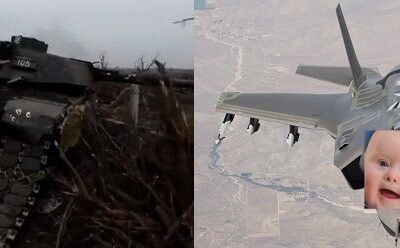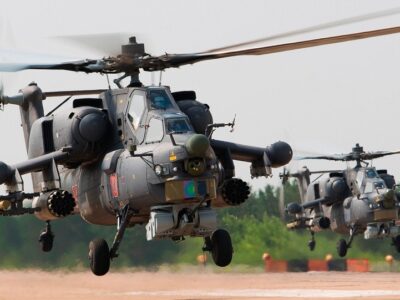In the last installment that was relevant for jet fighters, as opposed to CAS planes, I argued that being outnumbered is incredibly bad not just strategically, but also tactically. These blimp sized “fighter-bombers,” are designed to be outnumbered due to their massive fuel consumption. Well actually they’re designed to be outnumbered infinity to zero, since they can’t takeoff and land from rough fields.

The fate of the F-22, Eurofighter, Rafale, and others.
But even if they could get up into the skies, somehow, they’d be massively outnumbered due to their fuel consumption anywhere from 5-10x compared to a much smaller fighter plane. But these Military Industrial Complex shills argue that this doesn’t matter somehow. Their argument is that there is some mystical tactical superiority of these blimp sized fighters that apparently justifies them being at a huge numbers disadvantage.
They pretend that enemy fighters will simply spontaneously combust when entering a certain radius around their little garbage fighter/bomber. Why should this be the case? Well they have a variety of bullshit make-belief arguments for this. But I’ll mostly not even bother countering them. Instead I’ll play a game called:
Let’s pretend that’s true.

Because as you’ll soon see, these arguments are so absurd, that they aren’t even arguing for the F-22, let alone the B-35. They are in fact arguing against building fighter planes at all.
COPE #1: Air Combat is just about having a really big radar, and long range missiles. BVR missile have 90+% expected kill rates, so what matters is simply pressing that fire button.
In truth, all of the copes involve missiles, but not the truly maneuverable, short range ones. Instead, they pretend that long range missiles have physics shattering kinematic performance, where they fly for dozens if not hundreds of kilometers, before manuevering at 60+G’s and destroying enemy fighters. As always, we play a game called:
Let’s pretend that’s true.
If it were really true that all you needed to do was detect an enemy plane at, say, 200km and then press a button, fire a missile, and that was that, then you wouldn’t build a fighter plane.
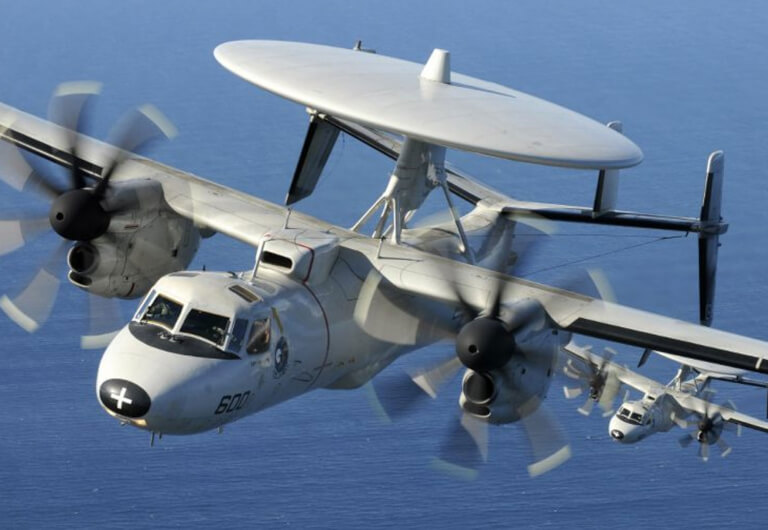
E-2 Hawkeye
Instead what you’d do is you’d put the missiles on the AWACS, like the E-2 Hawkeye, pictured above.
We’ve already seen how jet fighters use absurd amounts of fuel and have no endurance. While our modern fighters are massively overweight, even a fighter one fifth the size will still have equally terrible endurance, and consume a proportionally smaller amount of fuel absurdly quickly. The numbers for our current fighters were at around 25,000 lbs/hour. Even one fifth that is still 5,000 lbs/hr.
These planes have non-existent low speed performance. They can’t find jack squat on the ground, ignoring surface ships, nor can they patrol an area for any length of time. This makes them utterly useless to ground forces other than as shitty artillery, a role that other planes could fill much better. They are great naval scouts, but only because their kinematic performance lets them avoid incoming missiles as well as other fighter planes. If that wasn’t true, then they would also suck as naval scouts. We could simply build some low-fuel consuming recon planes to do that job, but better.
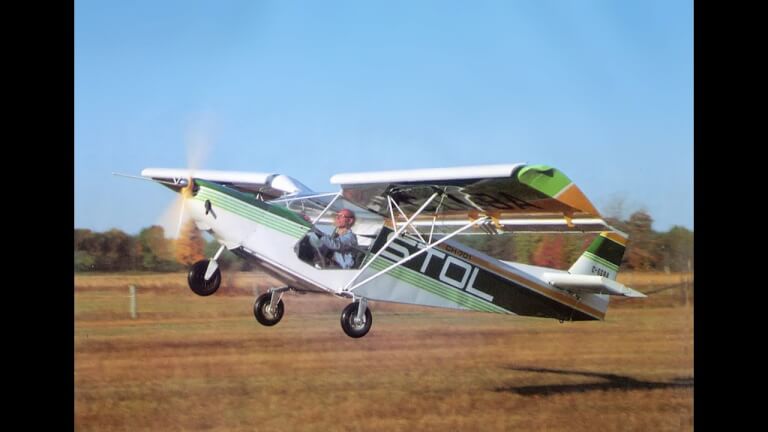
Pictured: If you can’t dodge missiles, just use these as naval scouts.
I don’t even think that I need to make an argument for why they can’t magically become cargo planes, replace troop transport helis, be high altitude surveillance aircraft, or really do any other role. Their one and only job is to be fast, turn hard while going fast, and have the thrust and low drag designs to stay going fast the whole time.

We’d want a turboprop straight wing AWACS for rough field STOL performance, but you get the idea.
If these jet fighters are just as vulnerable to missiles as everything else, they quite literally have no justification for their existence. And all I can say is that I wish that were the case.
I wish all you needed to do was put the missiles on the AWACS, which is essentially a cargo plane with a gigantic radar with multiple times greater range than the radar of even the most blimped up “fighter” planes. Additionally, the nose radar of the fighters can only see a limited FOV forward of the plane, at about a 60* angle to each side. while our AWACS has nearly 360* FOV.
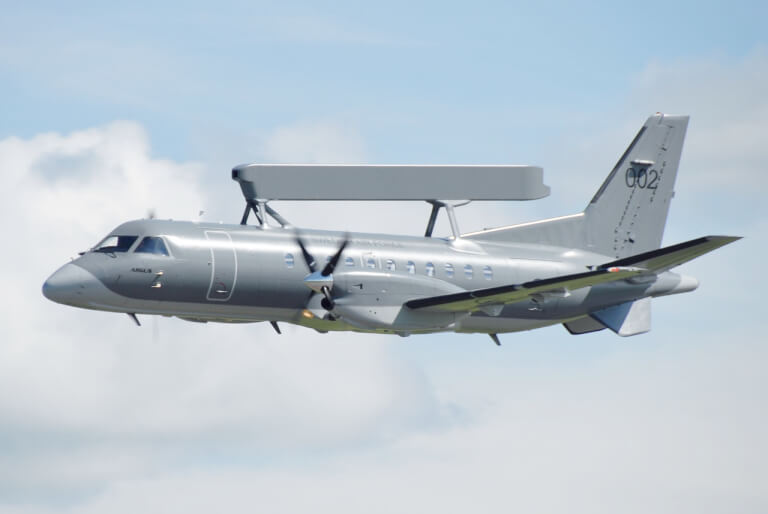
This, but with missiles on the wings.
Finally, although we’ll get to this later on “muh (fake) stealth,” the larger radars that they hold can use S and L band frequencies that “stealth” planes are just as visible in as all non-(fake)stealth planes.
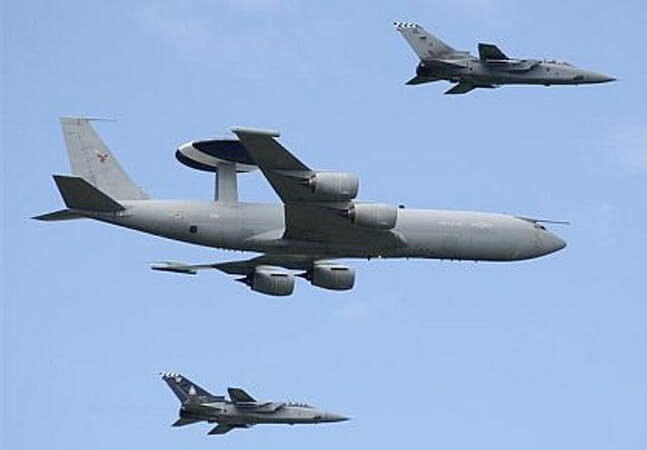
Take the missiles from the fighters and put them on the AWACS. Then just don’t have the fighters.
I can’t tell you how much I wish this was true. All existing fighters would be entirely irrelevant, meaning that we could almost immediately have the worlds best air superiority fleet. Secondly, those planes use less fuel, so we can dedicate more fuel to the rest of our military. Finally, we already need them for AWACS work.
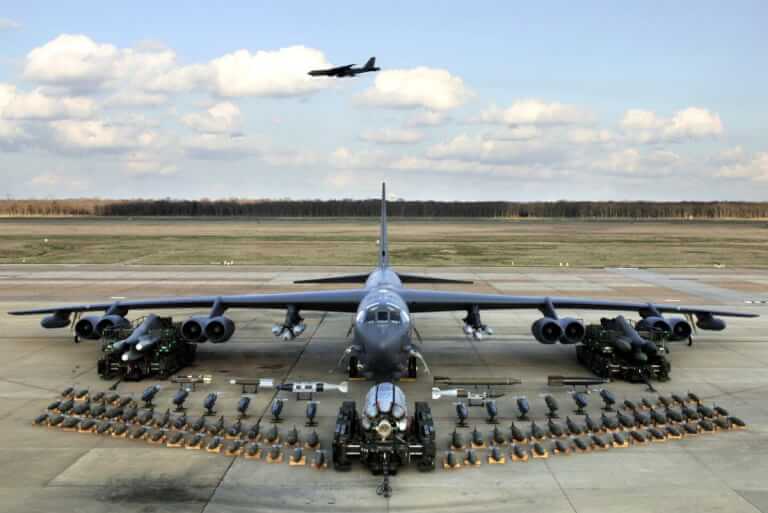
Imagine the B52, but carrying missiles. And either having a huge AESA radar, or flying in conjunction with an AWACS.
I wish this were true, but, unfortunately, the Military Industrial Complex is full of shit, as always. We need jet fighters, and all their fuel guzzling horror, because we need a plane that can fly fast, turn hard, and retain speed while turning. And being small certainly doesn’t hurt.
But we’re getting ahead of ourselves, because the argument they make for why you can’t just put the missiles on the AWACS is that the AWACS isn’t stealthy. Well first of all, no plane is stealthy when using their radar, for the same reason that no infantryman is stealthy when using a flashlight to look for other enemy infantry. If you can see them, then they can see you, and at much further range.

Imagine it was nighttime, and how many miles further away you could see him than he could see you. Radars and radar warning receivers work much the same way.
But if I were to spell out the cope, it would be something like this.
COPE #2: Well, having a gigantic radar is important, and having lots of missiles is important, but you also need (fake) stealth.
As always, we play a game called:
Let’s pretend that was true.
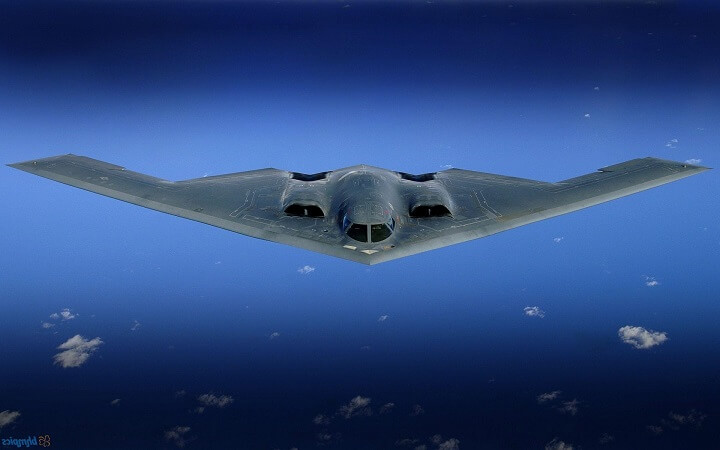
If you needed a plane that carried a lot of munitions, and was (fake) stealthy, you’d build the B2 bomber. It can hold 40,000 lbs worth of munitions inside. And, while I’m skipping ahead here, it’s actually harder to see with S and L band radars, unlike the (fake) stealth planes.
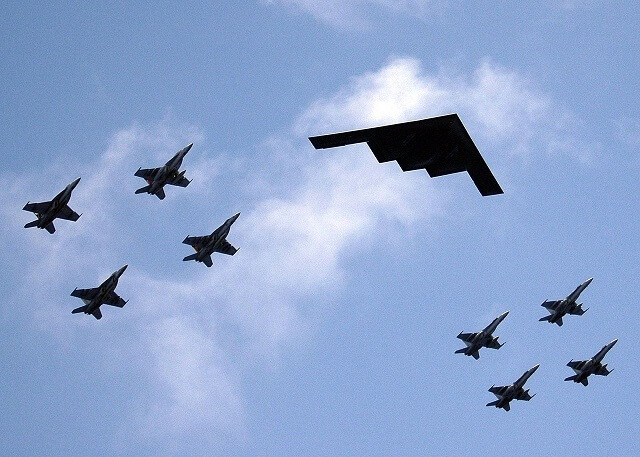
Skip the F-18’s. Just build the B2.
With 40,000 lbs of internal munitions, you could fit well over 100 AIM-120’s onboard, at least in terms of weight, if not volume. You could put 40 AIM-54 long range AAMs on there. So you’d be “stealthy,” and have tons of long range missiles to fire at the enemies. And you could justify a much larger radar in terms of weight. It’s fake stealthy, has a big radar, and has tons of long range missiles. So what’s not to like?

Well, that leads us to yet another cope.
Cope #3: Okay, you need (fake) stealth. You need a big radar. You need some AAMs. But what’s really important is that you have a high cruise speed, because having higher cruise speed adds more range to the missile due to higher starting speeds, which means that your missiles cause them to blow up at greater distances.
I think you all know what we’re about to do.

That’s right Emma! We’re about to play a game called:
Let’s pretend that’s true.
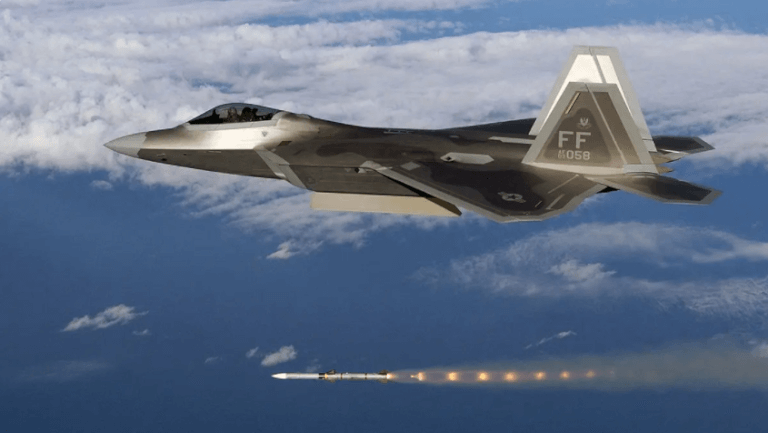
Here’s the F-22. It has a claimed cruise speed of around M1.4. That’s roughly 1,600 kmph.

And here’s the Concorde passenger airliner. It has a cruise speed of around M2, a nice 500+kmph faster. So take the Concorde, shape it for (fake) stealth, rip out all the seats, and install some internal missile bays. You can put way more AIM-120’s, or longer range missiles in that thing. And what’s more, it can cruise from London, England all the way to New York, America. So it’s got plenty more range.

It can be made just as (fake) stealthy, can hold way more missiles, can justify a way bigger radar in the nose, and has longer range. Guess we should just build a modified version of the Concorde then.
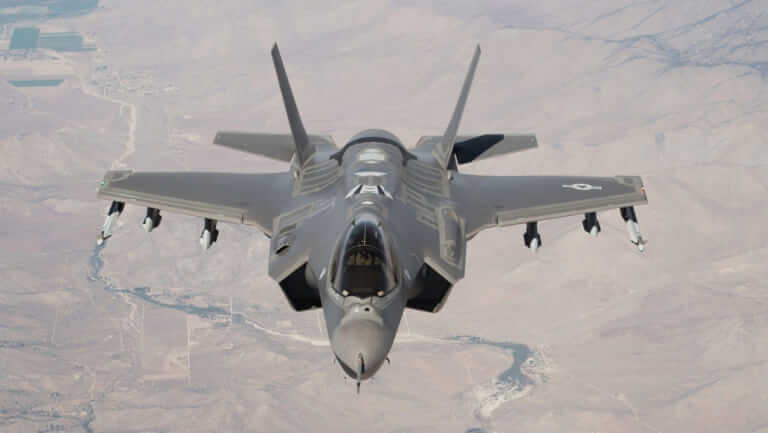
And oh BTW, the B-35 isn’t even fast. It was supposed to be fast. It was designed to supercruise. But Lockheed Martin fucked up, and it’s too draggy to supercruise.

I should note that this is very different from being designed not to supercruise from the very beginning, and sacrificing cruise speed for extra lift and reduced drag while turning. The B-35 doesn’t have anything to show for being slow. It’s slow because it’s draggy. It’s draggy due to the fake stealth harming the aerodynamics, and the retarded lift-fan making all three versions of the LARPster having a ginormous fat body, even the two without the lift-fan.

It looks like a ****ing pregnant whale.
So cruise speed better not be important, because the F-35 LARPMACHINE doesn’t even have that.

But when they’ve exhausted these three copes, there’s one last cope that is somewhat less bullshitty. It goes something like this.
Cope #4: Okay, so you need a big radar, fake stealth, and a high cruise speed. But you couldn’t just build a fighter version of the B2 bomber, or a (fake) stealth version of the Concorde. Because you need to be able to turn really hard.
Okay, but why?

Thus far we’ve simply been pretending that missiles delete enemy planes of all kinds that fly within a certain radius of them. However, now we hear that turning ability is important? Well not quite, as they’re still conflating structural strength with turning ability, but at least we’re getting there.
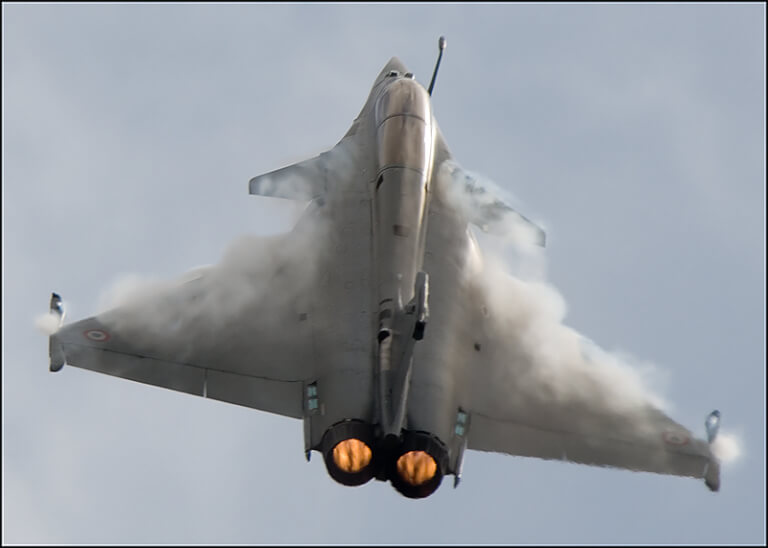
When pressed as to why exactly turning matters, they’ll imply something ridiculous, like the following.
Cope #5: Well, you know the missile is perfectly deadly within a certain radius. Something like 40 nautical miles (LOL) for an AIM-120 fired from an F-22. But if you’re outside of that range, and you have a 9G capable fighter, you can turn hard enough to avoid the missile.

We’ve finally entered a territory known as “almost true and very misleading.” It is true that the range of a missile versus any particular target will be diminished based on the turning ability of that target. A passenger airliner, with it’s gigantic size and poor turning performance will be more vulnerable to the same missile fired with the same parameters. Another way of phrasing it would be to say that planes that can’t turn hard in terms of Gs can be killed at further range than a harder turning (and smaller) plane.

F22
The argument is that what is really needed is a plane that flies very fast, is (fake) stealthy, has a big radar that gives its position away really well, and has the structural strength to withstand 9G turns.
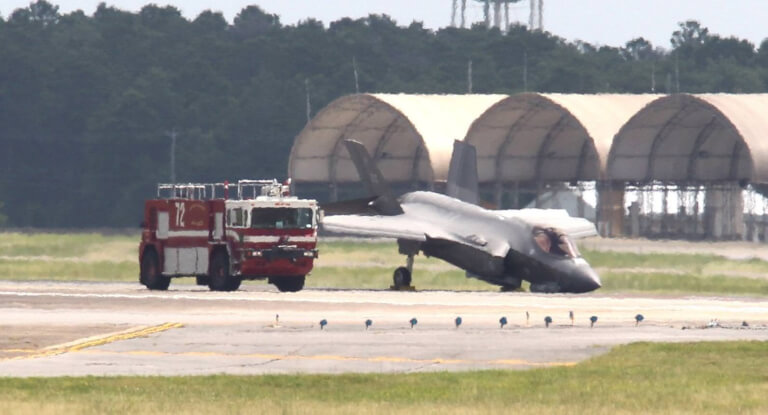
Now once again, the B-35 is slow. So it can’t even impart lots of energy to its missiles when firing them. Once they’ve reached COPE LEVEL 4-5, the B-35 has pretty much been admitted as being a piece of garbage.

F22 firing AIM-120d
But the B-35 is such a complete DERP that it’s not even fun to dunk on. It’s like making fun of a retard. I mean it’s hilarious, but you feel a little dirty afterwards.
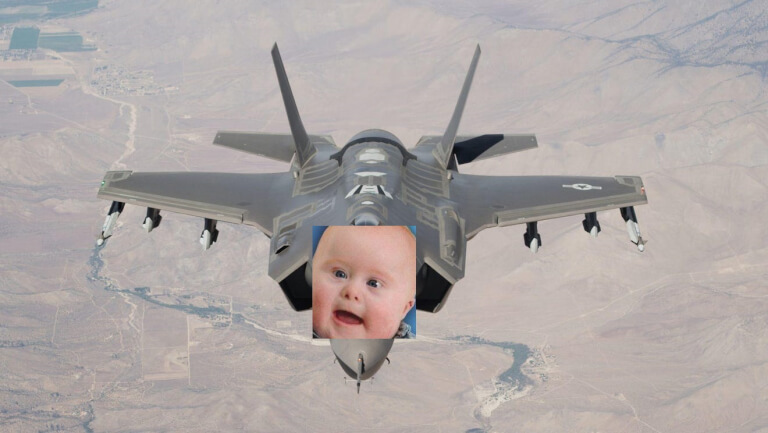
Making fun of the F-22, which is at least fast, is far more entertaining and productive. The B-35 is just garbage, but the F-22 is the premier version of the retarded concept I’m calling the Missile Loft Fighter.
What’s the criteria for the missile loft fighter you ask? Well it’d be something like the following.
Fly really fast. Have high structural strength. Losing shitloads of speed and altitude when you turn is irrelevant, for some reason. Being outnumbered massively, like around 8:1 from some 10,000 lbs fighters is also irrelevant.
If you can loft missiles further, you win.

But not like that you faggot. You also have to have high structural strength.

This leads us to our penultimate cope. After all, if we’re lofting missiles at each other, it still seems like it’d be way better to have lots of these planes. But the argument is something like this.
Cope #6: There is a certain lethal range for a certain missile against a certain target that can pull 9G turns. But if both planes have the same structural strength, then all that matters is which one is flying faster, or higher.
It’s like two people trying to stab each other with spears. If I have a slightly bigger spear, then I can stab you from further away. So therefore I just win. Having slightly longer range for missiles is the exact same.
And it doesn’t matter if you have a 2:1 numbers advantage, or an infinity:1 numbers advantage, my stick is further, so I can just kill all those planes from a distance and carry on like nothing happened.

There is something implied here that should be stated out loud. Because what they’re essentially saying is that missiles don’t actually do anything before they blow up the enemy fighter. Like, there’s the range at which they can pull 9G turns and be fine, like nothing happened. But then they get 100 meters closer and they pull 9Gs and it’s not enough and they blow up.

The reality is that there is no such thing as a plane flying supersonically and remaining at supersonic flight while pulling hard turns. That’s just flat out not possible. All these fighters will lose speed, even with afterburners engaged, when evading missiles. The closer they are to the missile, the more speed they will lose, due to the missile forcing harder turns.
And this leads us to the very last cope for why numbers don’t matter. It goes something like this.
Cope #7, the Final Cope, the One True Cope to Rule them All:
Okay, so if we’re flying head on, and we both fire missiles at each other from outside our kill ranges, we’ll both have to turn. However, because my missile was fired from a faster speed, of, say, 1600 kmph, mine has more range. So you’ll have to turn harder for any given missile shot than I will, which will cause you to lose more speed.
So then when we turn back into each other, I’ll be going slower, but even faster than you, relatively. Like, maybe I’ll be flying at 1,500 kmph, but you’ll be down to 900 kmph, since you had to evade at 3Gs for five seconds, and I had to only pull 2Gs for five seconds. Anyway, so now I have even better range for my next missiles, and so on and so forth.
This puts you at a serious energy disadvantage. My victory is inevitable. And there is much rejoicing.

This is it. This is the final cope. This is the last line of defense for why we need to build these overweight hyper-profitable garbage planes, especially the F-22. A complicated argument about energy management, that I’ll happily tell you isn’t even true for a variety of reasons.
Contrary to utter bullshit from Raytheon and Lockheed Martin, the purpose of long range missile shots isn’t even to get kills directly, as was effectively admitted in the last cope. Oh sure, some lucky shot here or there is nice, but that’s not going to happen against a competent opponent.
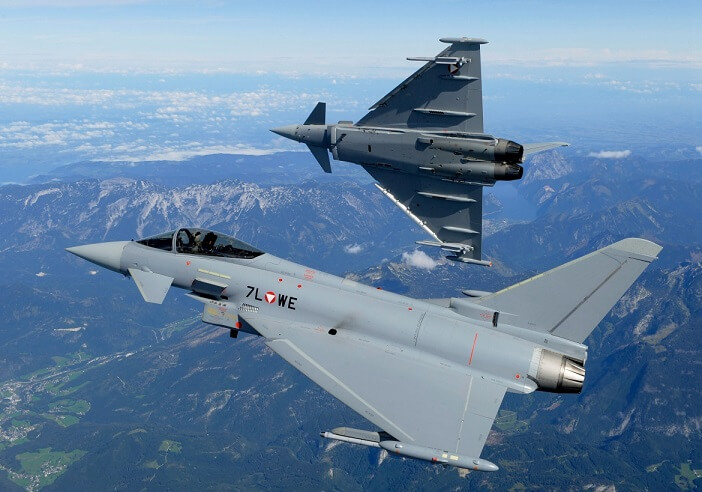
Any plane with working RWR’s will detect themselves being fired upon from many dozens of kilometers away.
Instead, the purpose is more like suppressive fire for fighter planes. Those long range shots drain energy, a fighter term of airspeed and altitude, from the opponent plane. They also force this plane to change directions, if only for a brief while. The longer range the shot, the less this is true, as the missile slows down drastically with distance. And with lower speed comes lower turning performance.
As we approach closer and closer to the plane firing the missile, the opposite happens. The missile is traveling faster towards us, and has more speed to burn in order to match our turning. At a certain point, we may even have to turn around completely, and try dragging out the missile. Eventually, we will go too close, assuming a relatively small and agile missile, and we won’t be able to escape it at all.
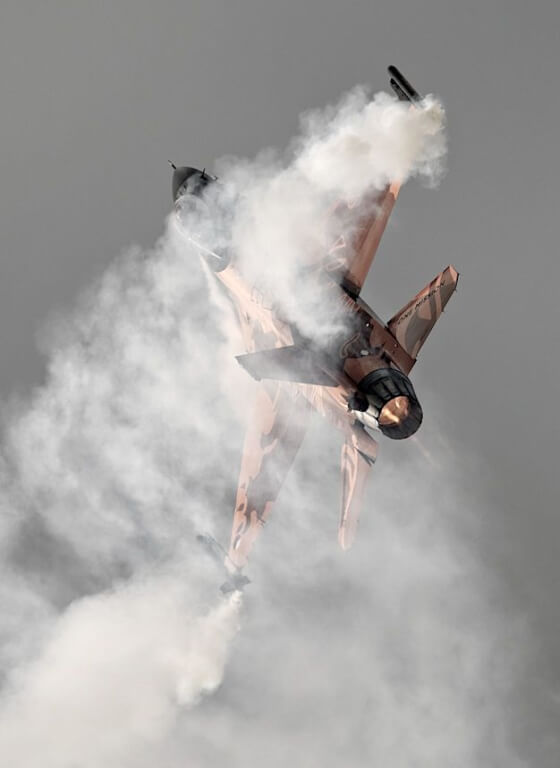
F-16 turning hard, losing speed. Love the vortexes generated.
The distance at which any particular missile, like the AIM-120, can kill a hard maneuvering fighter is a tiny fraction of the distance with which it can start suppressing said fighter, by forcing turns. While the extreme range may be of very little use, since tiny turns don’t bleed much energy, this “suppression,” starts to become more and more valuable as we get closer to the enemy.
While it is true that flying faster, and higher, gives the missiles more energy when firing, faster speed has massively diminishing returns due to the exponentially increased drag. And besides that, you are also flying faster into the incoming missiles, assuming that they are firing back at you.
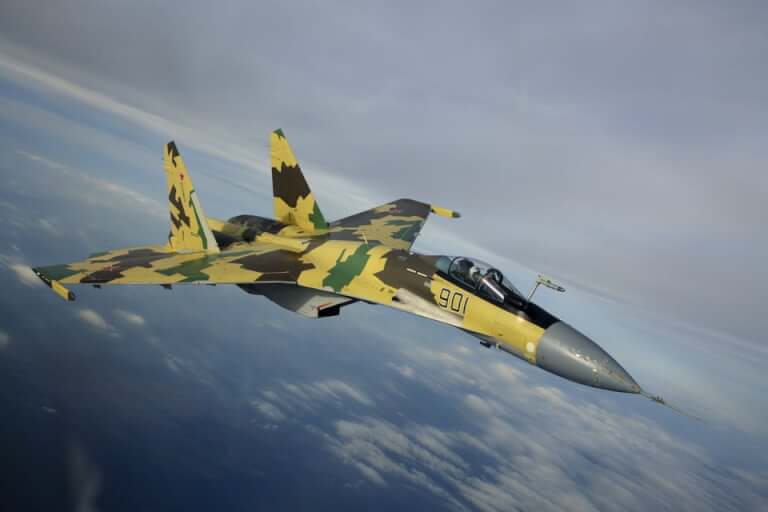
SU-35 positively ripping it into the incoming missile.
Higher altitude is more of an outright LARP, as these planes don’t have the ability to turn hard in the air at 70,000 feet, which will have roughly 1/15th the density. This leads to them being exponentially easier targets at these high altitudes.
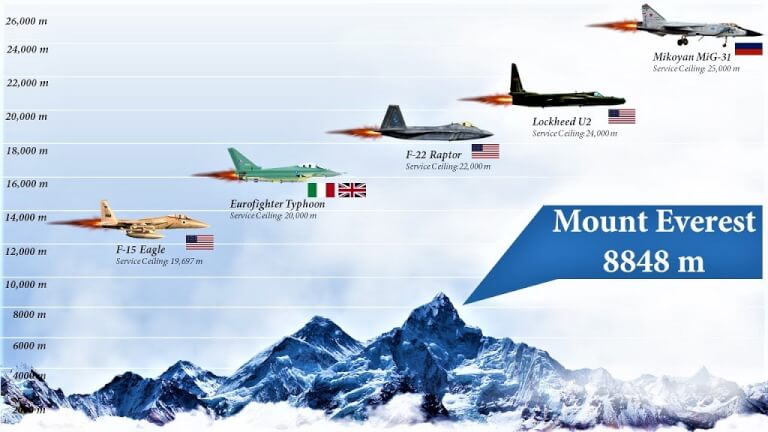
1/15th the air density, 1/15th the lift. Good luck evading missiles when you’re rapidly bleeding energy just to turn at 3G.
But while it is true that a faster plane can fire missiles slightly further, and theoretically force slightly harder turns at any given range, planes that make small sacrifices to cruise speed in order to produce more lift retain speed better anyway, with their higher lift/speed ratios allowing them to turn with lower induced drag. The more turning is required, the proportionally less speed they lose. To extend the infantry fighting analogy, this makes them harder to “suppress.”
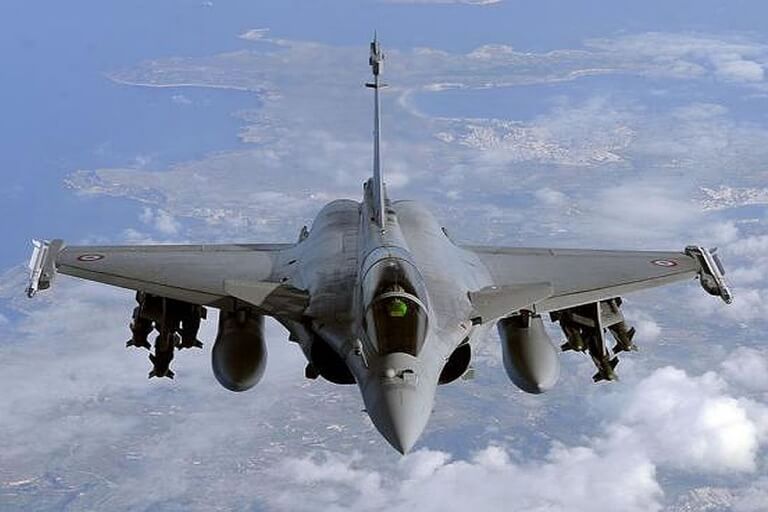
The Rafale is somewhere in between the missile lofter, and a serious sustained turner. It’s a fine design, it just uses too much fuel.
Ability to retain speed through decreased induced drag while turning is harder for random people to understand than simple structural strength, or thrust to weight ratio. This lack of understanding is exploited by these propagandists. This is also Lockheed Martin desperately tries to keep the F-35 out of any pilots hands, because the pilots would say “this thing loses all its speed while turning and I’m going to fucking die in it get me the fuck away from this piece of shit.”

Even when talking about a serious design, like the F-22, it is not clear, even in a 1:1 engagement, that the slightly further missile lofting distance is worth the much worse speed retention inherent in that behemoth design with massive induced drag when turning. As more missiles get fired, and especially from more planes, the ability to retain speed through turning becomes ever more important.

JAS-39 Gripen.
We will never even have this 1:1 engagement anyway, since fighters fly in pairs, or with even more support. But even if that somehow happened, and we had something like an F-22 and a Gripen flying directly towards each other, even then it is still entirely unclear which plane is at a greater advantage. The F-22 will cruise faster, and be starting at a higher speed. The Gripen will retain its speed better. My money’s on the Gripen pulling it out, but only testing could tell us, even with this contrived scenario.

And in reality, for the same fuel consumption of Gripens, you’d get at least twice as many of them, more like three times as many.

Emma likes the sound of that!
We’ve been given “fighters,” that are the size of blimps, and that use tens of thousands of pounds of our precious fuel every time they fly. This is assuming that they can even fly, and not get destroyed on the ground, of course.

Coming soon to an F-22 near you. And B-35.
But even if they could, the supposed tactical justification is that they are going to be flying directly into 1v1 engagements with other fighter planes, and they’ll have slightly better missile ranges.
This will supposedly cause them to progressively bleed out energy from the other fighter until eventually they win. Except that the F-22 is a draggy bitch when she turns, especially when using thrust vectoring, and the B-35 is just an absolute LOLcow. Oh and also you’re flying directly into the missiles themselves, so you’re lengthening the effective range of the incoming missiles.

In reality what would happen to these planes is exactly what would happen to infantry who are horribly outnumbered on the ground. If we had our soldiers getting outnumbered 5:1, they’d get pinned down with suppressive fire, and then eventually killed with something. This tactic works even better in air combat. At least some Chad infantrymen could maybe use some tactics like laying smoke and moving between cover secretly or something. Or maybe they’re amazing shots or something. Like, they’d at least have some chance.
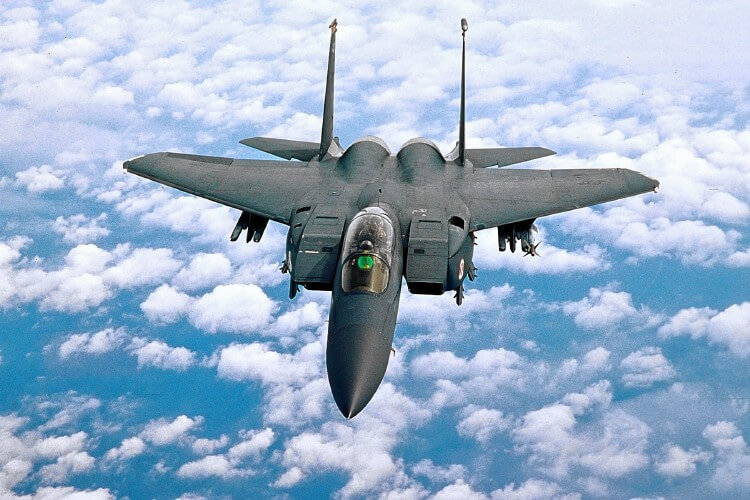
Imagine trying to pull hard Gs in the overweight F-15 at that altitude.
In air combat there is nowhere to hide*. You have to kinematically defeat the incoming missiles. What would happen is that the side that outnumbered the side with the fuel guzzling blimp-fighters would simply stagger missile shots against them, force them to be constantly defensive, and then go in and rip them to pieces.
And oh BTW, I’ll cover this later, but firing missiles from multiple different locations makes missile evasion exponentially hard, since one single turn no longer works geometrically against both missiles. In other words, we have to turn even harder, for longer, and possibly in different directions when facing staggered missile shots from different angles.
*All planes can actually hide very well at low altitude using terrain masking, assuming we’re not over the ocean. But in that case cruise speed is beyond irrelevant. All that matters is lift/speed ratio, and if your F-22’s have resorted to terrain masking you have thrown away all of the theoretical advantage. For low altitude, a very high lift/weight ratio is preferred, as it allows you to follow the terrain better.

And in case you’re thinking that the faster planes could just run away, think again. Missiles may not have fantastic turning ability, especially with avoiding drag, but they’re pretty much designed to chase down non-maneuvering planes trying to run away. You can’t outrun the mach 4 missile, only out-turn it, so there’s no turning on the afterburners and just flying away. You’re going to get a rectal exam from MR. AIM-120, or R-77.
NOTE: I meant when you’re in the missile’s range. Obviously if they try firing the AIM-120 from 100+ km away you can just continue flying straight, as the missile will run out of speed and fall to the ground long before it gets to you. This is very different if fired 10 km away, where the missile will still have plenty of speed by the time it reaches the jet fighter.
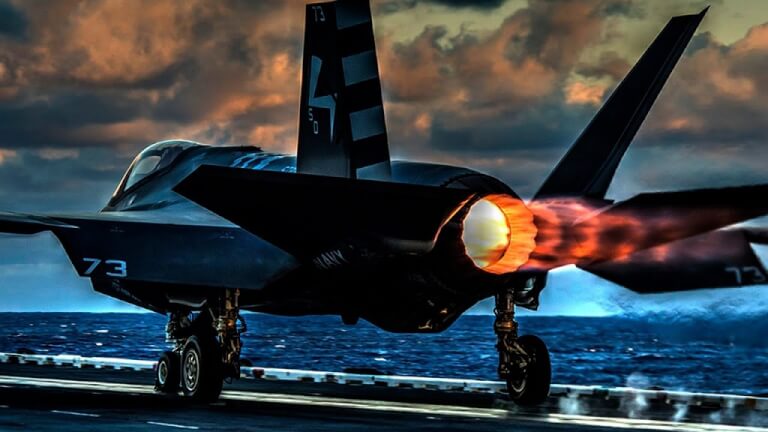
Although even with the afterburners this slug is slow.
All of which means that a slightly slower cruising plane can chase down a faster cruising plane with trivial ease, simply by shooting missiles at them. So no, there’s no running away unless you’re already massively far from them. Planes designed with the retarded, but highly profitable Missile Lofter concept, such as the F-22, are going to get hunted down and destroyed with almost trivial ease by the side that outnumbers them, especially since they are arguably shittier even on a 1:1 basis in actual fighting, since they don’t retain their speed well while turning.
Which is kind of important, since nobody ever gets a single missile fired at them.
Even if we had some F-22 put in some Herculean performance and somehow, someway, take out a single of the frankly superior fighters that outnumber them 5:1 or 10:1 before being blown up. Congratulations, you’ve managed to get a 1:1 exchange ratio against a force five times your size. So now they proportionally outnumber you even more.

Missile Lofting, or Missile Jousting, is just about some of the dumbest shit I have ever heard of in my entire goddamn life. It’s so stupid that I actually feel dumb for even entertaining the idea. It has no basis in reality, and its sole purpose is to give Raytheon and Lockheed Martin and all the rest an opportunity to LARP like they’ve got some secret “high-tech,” bullshit that supposedly justifies a massive separation of manufacturing cost and pricetags.
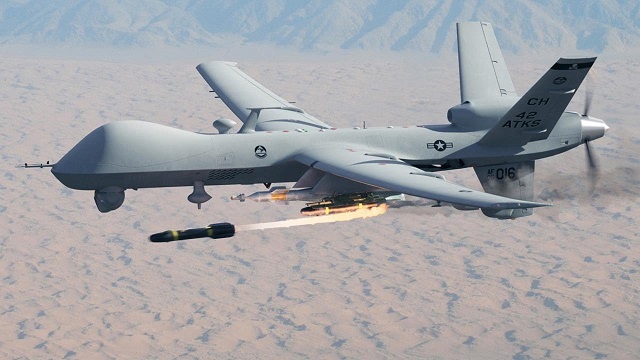
MQ-9 Reaper Drone
Remember this guy? The MQ-9 Reaper Drone, a shitty little plane with a shitty little camera, and a pricetag of $32 million.

You think that’s funny? What if I told you we could make a shitty little plane that sucks at everything and charge $130 million per.

That’ll be $132 million please.
One. Hundred. And. Thirty. Million. For a plane that can’t cruise, can’t turn, can’t bomb, and most certainly can’t do CAS. But in exchange for sucking at everything it also consumes over 25,000 lbs of our precious fuel every hour.

I can’t tell if it’s funny or sad. Maybe both.








